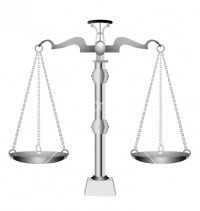

Understanding the units of measure attached to bullion products gives you an elevated knowledge of exactly what you have in your investment portfolio. It also helps you make wise decisions about purchases. Keep this information in mind when you are browsing JM Bullion and looking to expand your precious metals collection.
Troy ounces measure the mass of precious metals. When you see the weight of a bullion product stamped on it in ounces, those ounces refer to troy ounces (as opposed to avoirdupois ounces), even if the stamp does not explicitly say that the measurement is in troy ounces. There are 31.1034768 grams in one troy ounce. It is also worth noting that copper, being a base metal, is always referred to in avoirdupois ounces.
Avoirdupois ounces find their primary use outside the realm of precious metals. They belong to the system of mass measurement most commonly used in the United States. Hence, when you see ounces listed on food labels and other products, those are avoirdupois ounces. There are 16 avoirdupois ounces in one pound, and one avoirdupois ounce is equal to 28.3495 grams. There are 1.09714286 avoirdupois ounces in one troy ounce.
Although these measurements are precise to several decimal points, you don’t have to memorize the exact number to make good buying decisions. However, keeping in mind a general idea of how the measurements compare helps you have a clearer understanding of what you’re getting.
Both the terms “karats” and “carats” refer to precious metal purity. However, for the sake of clarity, “carats” usually refers to diamond weight.
You usually hear about karats in connection with gold. The higher the karat number, the more valuable the metal. The karat is a simple way of stating the ratio of precious metal in an item to other alloys. For example, a 10k gold necklace is 10 parts gold, 14 parts other metals. Here are other common karat labels and the purity to which they refer:
Bullion, by definition, is as close to 100% pure as it can get, so expect gold bullion products to be 24k. Mints usually stamp the weight and purity of their products on all their coins and bars. Gold jewelry products also have a purity stamp on them (though you may need a loupe and some patience to find it). Most gold jewelry is between 10k and 18k, because pure gold is too soft to stand up to everyday wear and tear.
If you have an interest in buying bullion in bulk, you’ll come across 1 kilogram gold bars in your search for items to fill your vault. There are roughly 32 troy ounces in one kilogram (32.1507466 ounces is the exact figure). You may also encounter one-kilogram palladium, platinum, and silver bars.
If you are new to the precious metal scene, you may find it challenging to keep track of all these common conversions. At JM Bullion, we want our customers to know what they are buying, so you can use our website as a comprehensive resource for information, as well as a trustworthy shopping resource.